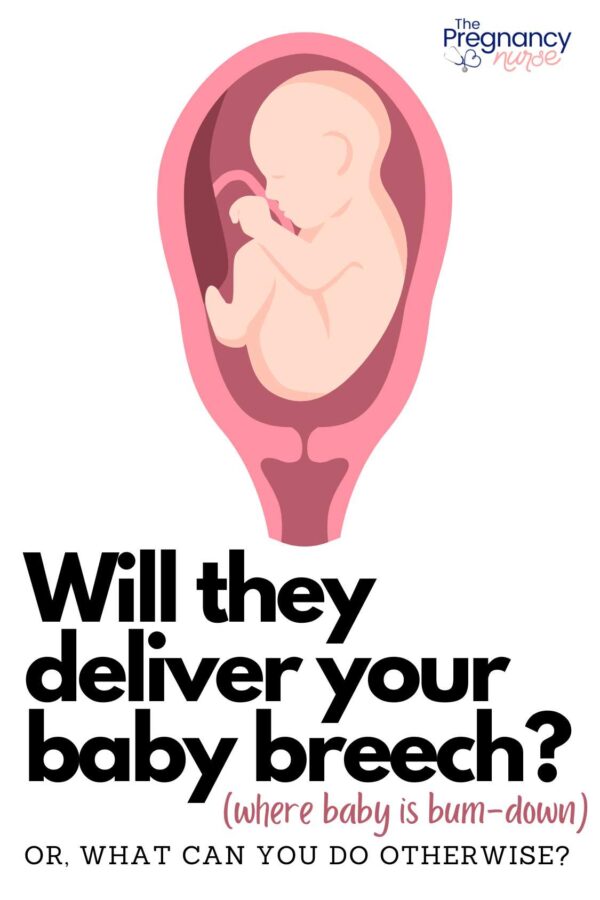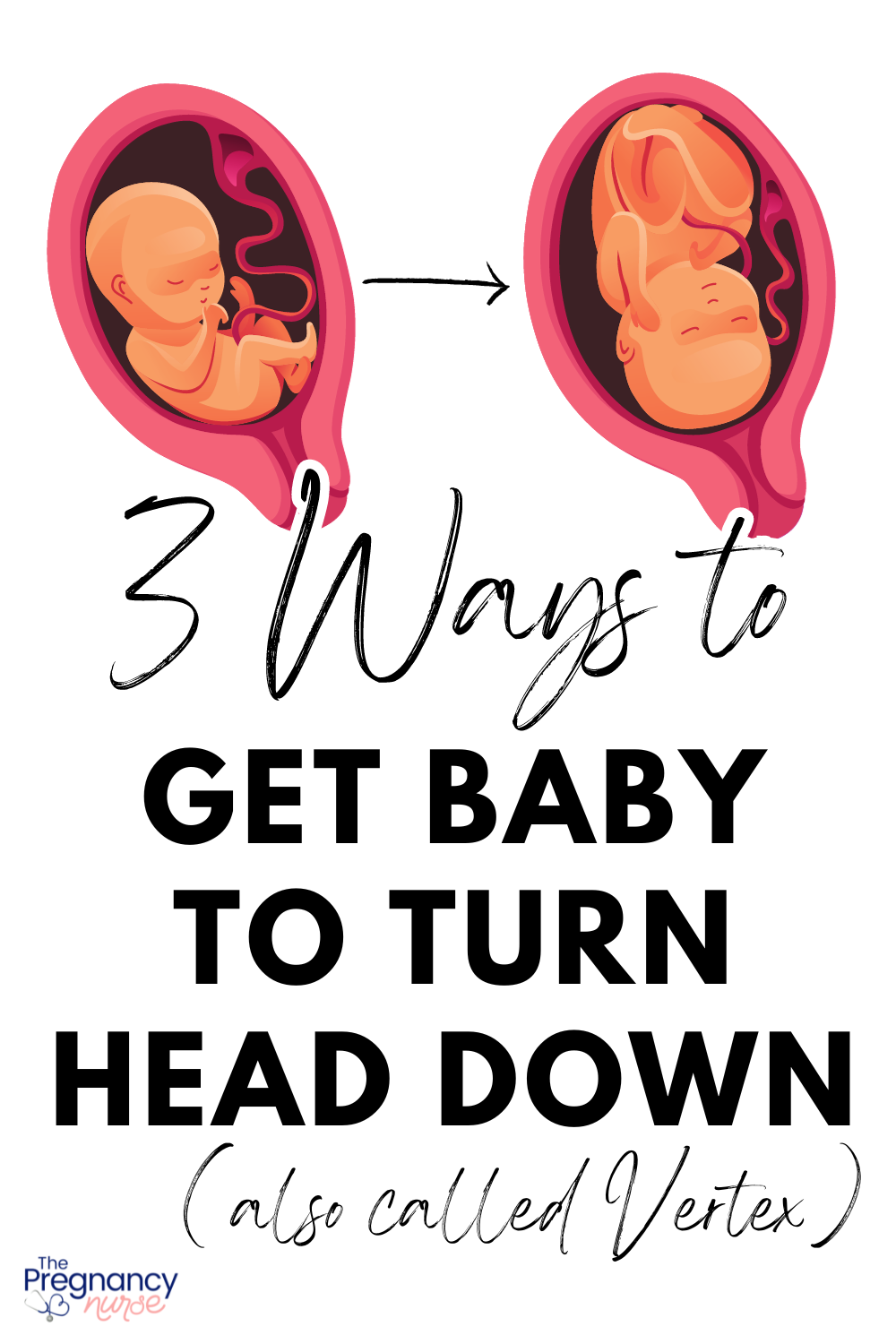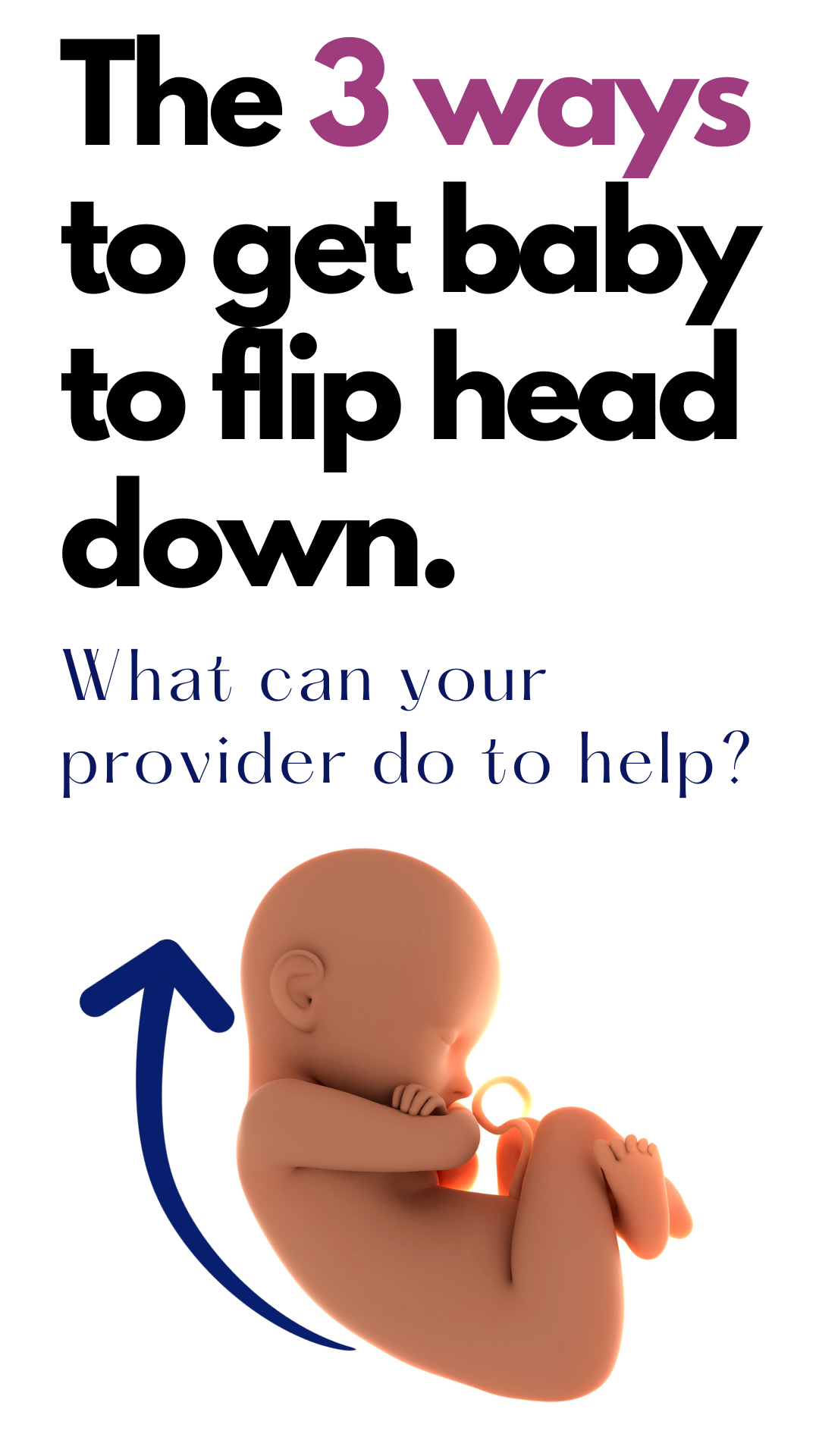👋 I’m so glad YOU are here. Are you looking to also get your partner prepared? This is for BOTH of you. Couples just love it and I know you want to both feel prepared!
Is your baby breech and you’d like them to NOT BE? You’re in the right place. Today I’m going to share 3 things you can do (starting from least-aggressive to most-aggressive) to help baby turn. Remember, in the US they most often won’t do breech vaginal deliveries — so it’s good to try to get them to turn (if they are willing).
If you’re wondering how baby is positioned you’re probably also wanting to make sure that hospital bag is packed — grab my packing list right here:
I also have a video on this same subject:
When should baby be head down?
Before get started though — how far along are you? Babies have LOTS of room during the first and second trimesters, and even have a good chance of turning on their own prior to about 33 weeks. I have a whole post on when baby should be head down that you should check out if you’re still early.

I teach you what actually works in labor — not just for flipping baby, but for staying calm and knowing what to do next — inside my Online Birth Class.
How to get Baby to turn head down?
There are 3 methods I’m going to talk about. They all encompass more than just like “one thing” but they are three things to try — Spinning Babies, using a chiropractor or having a version.
Spinning Babies
There is a site called Spinning Babies that has LOTS of moves you can easily try at home to get baby to turn. Some of my favorites that patients have tried:
- Laying head down on an ironing board propped up on the couch
- Shining a flashlight in your lady-bits
- The biggest one is a forward leaning inversion — so check that one out on their site.
Incorporating movement into your life is SO smart, I’m a huge fan of incorporating movement into labor too — I have labor movement cards in here to help you do JUST that!
Chiropractor
This is honestly the one I’ve seen the MOST luck with.
You’ll want to see a Webster technique trained provider (that’s super important because other chiropractors won’t be as helpful). They have specific treatments they’ll do that somehow get baby to turn.
And frankly, guys — I’m not always a Chiropractic fan — but I do believe that for SPECIFIC things that they are TRAINED to do can be super helpful.
I had one of my favorite chiropractors on my podcast a few years ago — so you might want to listen to what she has to say.
As a note — your provider might get WEIRD when you mention a chiropractor. Mostly because a lot of them practice outside what they’re trained to do. Just say that you’re wanting to see if they can help baby turn, and ask if they have any recommendations.
If not you can look up a Webster Technique chiropractor in your area. Many insurances will cover it!
Real quick — it’s SO important to count baby’s movements both head down or otherwise — grab my kick counts cheat sheet (it is NOT getting 10 movements in 2 hours, if you’ve been told that, that’s wrong).
External Cephalic Version (also called ECV)
This is where your provider will use their hands and forearms to get baby to turn.
They first relax your uterus with medications that will minimize any contractions.
Often they offer an epidural before doing it (studies show that it’s more successful with the epidural as you’re not fighting them with them pushing on your belly).
They’ll use ultrasound to monitor baby’s heart rate, and baby’s position as they do it. Most often it requires two trained practitioners to give it at try.
They’ll grease up your belly with KY jelly to help them manipulate baby into the right spot.
Sometimes after a version they will induce you, or sometimes they will send you home.
Anesthesia needs to be standing by as there are risks to this procedure and baby may go into distress and a C-section may be necessary with it — so discuss the risks and benefits of it with your provider.
I have seen a LOT of doctors do versions. Some are so gentle I’m thinking “when are you going to start?” when they tell me they’re done. Some doctors really get into it with forearms and quite a lot of pressure to try to get baby to move. If you’re considering a version I’d ask for the provider in the office who has the most success with it. Ask your provider how successful they are with it, and if they don’t feel super confident maybe ask them to bring in one of their most successful colleagues to help them.
Versions have a pretty good success rate (ranging from 50-78% from what I’ve seen) — but they DO come with risks, so you should talk with your provider about it at length.
And I’m not kidding about finding one who really ATTEMPTS it (not just gives baby a little shove).
Want to know more doctor tips — check out these posts:
- How To Ask Your Doctor To Induce You
- 3 Things To Do When Your Doctor Says You Have A Big Baby
- Why Do Doctors Push Inductions Of Labor?
- How Often Do Your Go To The Doctor When Pregnant?
- The MOST Traumatic Things In Labor & Delivery
Worried about what happens if baby won’t flip or things don’t go as planned? My Online Birth Class helps you feel ready no matter what your birth looks like.
How painful is a version?
So, here I am telling you to find a doctor who really puts their back in it — but how painful is that going to be?
Well, first off – I’d request an epidural as noted above. HOWEVER an epidural won’t take away the pressure of them pushing on your belly. People often still do find it uncomfortable. But not bad. It’s just like someone sort of sitting on your stomach for a bit.
They push for just a few seconds, and they abate and check on baby — so it’s not like constant pushing for a long time.
If your provider gives ANY push-back to an epidural with it remember:
- Anesthesia HAS to be standing by due to the risks (and we also need to have an OR available in case you need it)
- That study above shows it is a LOT more effective with it!
It can feel weird to push back on your provider for something they don’t recommend. Honestly, who knows WHY they don’t recommend it — but if you WANT it, you should vocalize that. I give you so many tips for making your birth right for YOU in here.
Bonus Option: Be OK With It:
So, your baby is breech and they may have been that way for a while.
Spinning babies hasn’t really worked, and you’re not up for a chiropractor and the version just doesn’t feel right?
That’s OK.
Sadly, we really don’t know what’s happening in that womb. If baby is shifted does their cord crimp or something? Is there a REASON they stay breech?
My friend Rachel had that. Her baby had been breech since the 20 week ultrasound. She just didn’t feel good about the options…. I love the podcast she came and chatted about how amazing her cesarean was.
Remember that every birth is magical. It can be hard when things go unexpected, but really baby coming to us safely is our #1.

Ask your provider to deliver breech.
There is the option of asking your provider to do a breech delivery.
But, let me just give you a few facts on that one:
- Providers malpractice insurance REALLY doesn’t like breech deliveries, they will council you over and over that they recommend a cesarean if baby is breech.
- You could ask if they know of a local provider who WILL do a breech delivery (if they do a lot and you’ve had good prenatal care they will likely take over your care if they’re willing — at best you could at least get a second-opinion with them).
- Most providers just aren’t trained in it. They’re not good at it. I’ve definitely seen them happen with twin B being breech, and I’ve also had precipitous deliveries with breech babies. Providers get very nervous and frankly just aren’t good at it (even super-experienced ones).
- Ultimately most organizations decided that the risks of a C-section were less than those of having a breech delivery.
There can be devastating consequences with a poor breech delivery. And while your provider can’t MAKE you have a C-section you really need to understand the risks. You will assume them if you go ahead with it. Here is ACOG’s stance on breech singleton deliveries.
However you’re going to end-up delivering it’s important to prepare for both vaginal or breech options. The Online Prenatal Class for Couples is the easy way to get prepared for birth — it covers all the things:
- Cesarean delivery
- Vaginal delivery
- Inductions
- Using natural pain mangement
- Using hospital pain control (epidural, etc).
You honestly are never sure what could happen so I would totally recommend you join me in there!

And, if you’re not quite sure you’re ready for that whole thing, check out my free prenatal class. It’s your first step toward getting in the driver’s seat of your birth.
Sources:
- Yoshida M, Matsuda H, Kawakami Y, Hasegawa Y, Yoshinaga Y, Hayata E, Asai K, Kawashima A, Furuya K. Effectiveness of epidural anesthesia for external cephalic version (ECV). J Perinatol. 2010 Sep;30(9):580-3. doi: 10.1038/jp.2010.61. Epub 2010 May 20. PMID: 20485361.
- Felemban AS, Arab K, Algarawi A, Abdulghaffar SK, Aljahdali KM, Alotaifi MA, Bafail SA, Bakhudayd TM. Assessment of the Successful External Cephalic Version Prognostic Parameters Effect on Final Mode of Delivery. Cureus. 2021 Jul 26;13(7):e16637. doi: 10.7759/cureus.16637. PMID: 34458042; PMCID: PMC8384386.
- ACOG clinical — Mode of Term Singleton Breech Delivery Committee Opinion Number 745 August 2018









 What STD Tests are given to Pregnant Women?
What STD Tests are given to Pregnant Women?
